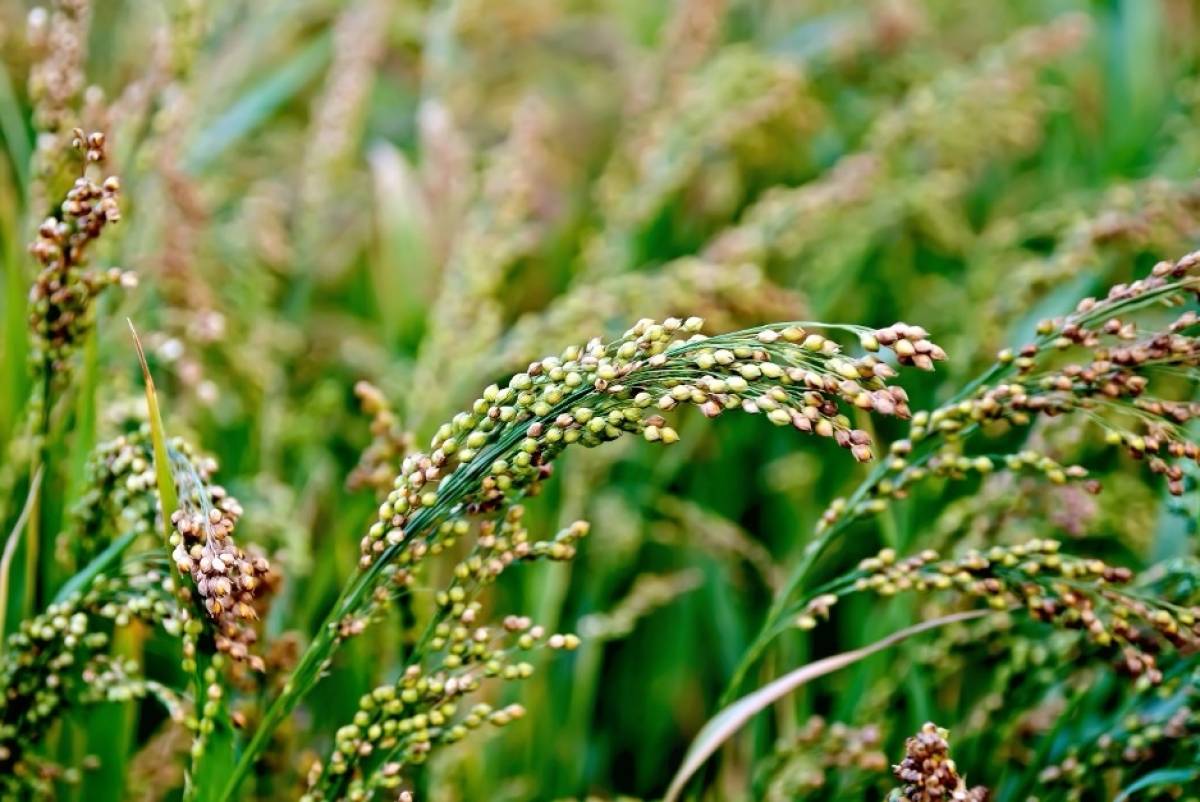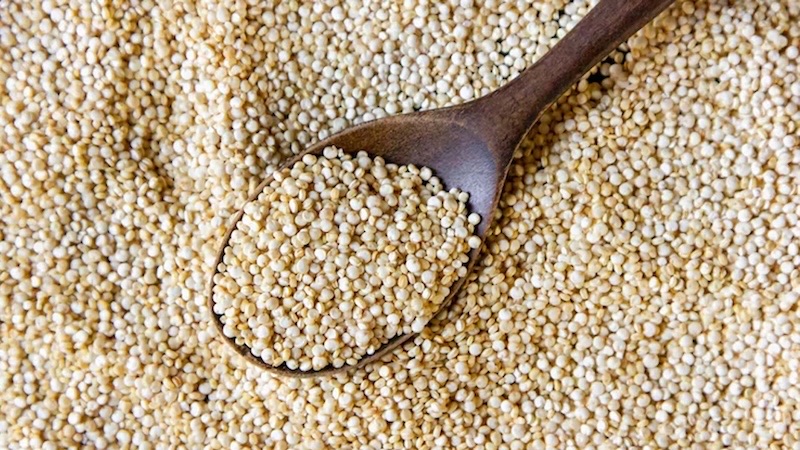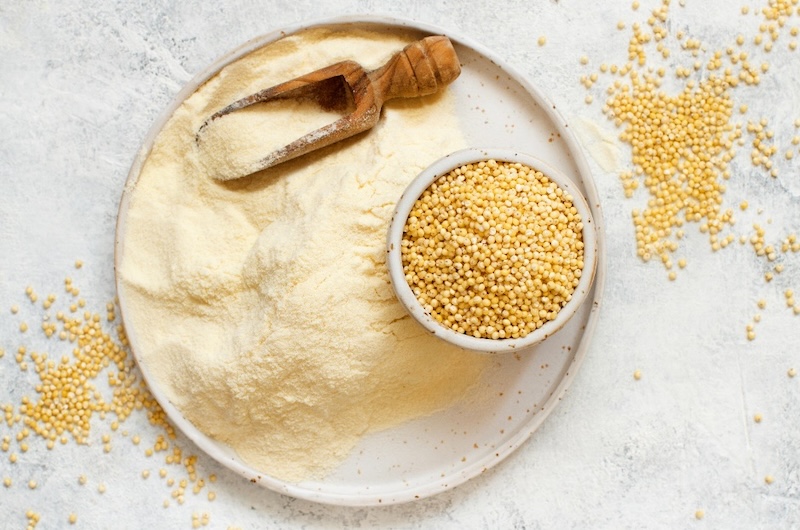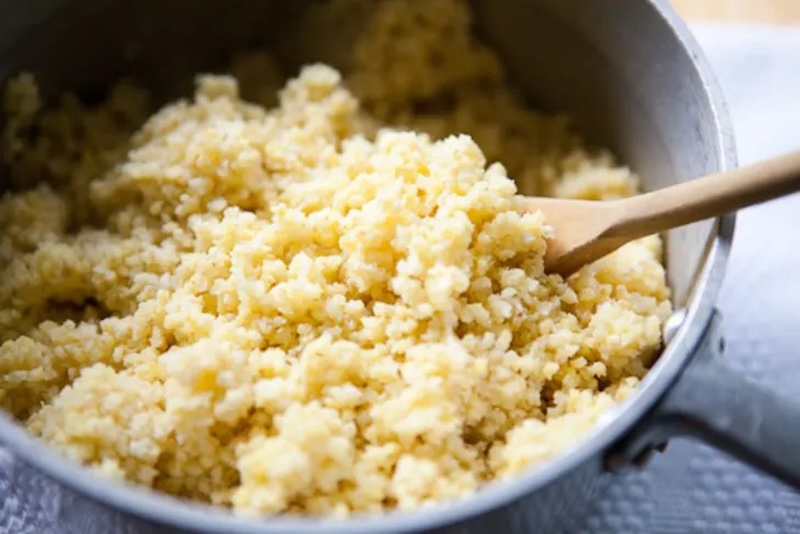Why Millet Is a Nutritional Powerhouse

Millets are small-seeded grains widely cultivated and consumed in many parts of the world.
Although not very common in the US, in India, for example, millet is a staple that has been part of the country's cuisine for centuries.
The nutri-cereals are rich in dietary fibre and other necessary nutrients required by the body. Millet has a good amount of phytochemicals, micronutrients, and protein, which have many health benefits.
Moreover, millet's amino acid content is higher than in other cereals like maize.
Nutritional Value of Different Types of Millet

Different types of millet come with some unique nutritional value. Each type of millet is rich in protein, and adding them to your daily diet can benefit your health in the long run.
Let’s highlight some of the most popular millet types and their nutritional importance:
1. Foxtail Millet
Rich in dietary fibre, foxtail millet is an excellent source of essential minerals such as magnesium, calcium, iron, and manganese which are all necessary for bone health and the proper functioning of various organ systems in the body.
Additionally, this ancient grain provides a good amount of protein for vegetarians who may need plant-based sources of protein to meet their daily nutritional needs.
2. Amaranth Millet
Amaranth millet contains vitamin C as well as iron, vitamin E, magnesium, potassium, and phosphorus. Moreover, this grain is also high in folate and vitamin A.
3. Kodo Millet
Kodo millet is a gluten-free, high-fibre grain with a mild nutty flavor, making it an excellent addition to any diet. It contains numerous essential vitamins and minerals, such as iron, magnesium, manganese, phosphorus, and zinc. Each serving also provides about six grams of protein and four grams of fibre.
Additionally, kodo millet is rich in B vitamins like thiamine (B1), riboflavin (B2), and niacin (B3). These vitamins are important for metabolism regulation as well as for reducing fatigue and promoting healthy skin.
4. Finger Millet
Finger millet, also known as ragi, is a great source of protein, carbohydrates, fibre, and minerals such as calcium and iron. It is also low in fat and contains various antioxidants, making it a healthy addition to any diet.
Finger millet can be incorporated into various dishes, including porridge or roti, for added flavor and texture.
5. Little Millet
Little millet, also known as kutki, is packed with essential minerals like phosphorus, magnesium, iron, and dietary fibres. These nutrients make them an ideal food source for improving their overall health.
Additionally, their high content of antioxidants helps reduce inflammation and protect against chronic diseases such as heart disease and stroke.
6. Sorghum Millet
Sorghum millet contains essential vitamins and minerals such as Vitamin B6, magnesium, phosphorus, iron, and zinc. It also contains significant amounts of protein, complex carbohydrates, and dietary fibre, which helps digestion.
The Health Benefits of Millet

One cup of cooked millet contains 207 calories, two grams of dietary fibre, six grams of protein, and less than two grams of fat. This one bowl is filled with various vitamins like B6, E, C, K, folate, niacin, pantothenic acid, and riboflavin, along with other essential nutrients like selenium, potassium, phosphorous, magnesium, iron, copper, and calcium.
Some known health benefits of millet - a nutrient-packed cereal grain - include:
1. Aids in Weight Loss
This super cereal is low in calories but rich in fibre, minerals, magnesium, vitamins, and bioactive compounds, making it an excellent addition to a well-balanced diet.
Millet also has more protein than it has carbohydrates. Protein in diet is essential to keep you full for longer and curb the urge to binge eat, aiding in weight loss.
2. Promotes Heart Health
Millet is rich in magnesium that helps lower your blood pressure, keeping the heart in good shape and promoting heart health.
And if your heart is healthy, you decrease the risk of strokes, heart diseases, or attacks.
3. Keeps Your Gut Healthy
Millet contains both soluble and insoluble fibre, which supports the production of good bacteria in your digestive system, aiding your gut health.
Millet as a Substitute for Crops Affected by Climate Change
You may be aware climate change is a big problem globally that is affecting food production.
Climate change has triggered widespread crops diseases and pests, desertification, food insecurity, crop schedule changes, and soil degradation.
More specifically, temperature increases around the world due to climate change is affecting production of many food crops such as rice, reducing crop yields.
As such, it has become necessary to adopt mitigation measures to keep up with the impact of climate change in agriculture. Growing more millet can be a nutritious alternative to affected foods like rice, which are hard hit by rising temperatures worldwide.
How to Cook Millet

You can buy millet online and in grocery stores, where it is sold dried, puffed, or ground as flour. There are many recipes for cooking millet, but generally dried millet can be cooked much like quinoa or couscous: use a ratio of 1 cup dry millet to 2 cups liquid and bring the mixture to a boil in a saucepan until the millet absorbs most of the water (about 15 minutes to cook and 10 minutes to fluff). Puffed millet can be eaten as a snack or consumed as a substitute for puffed rice cereal, while millet flour can be eaten instead of whole-wheat flour.
You can also prepare millet to a creamy, porridge-like consistency that’s great for a hearty breakfast by simply using more water (three cups instead of two cups) and stirring frequently as it cooks. Pour millet porridge into a pan to cool and slice it as you would polenta, and then fry it into savory squares or croquettes.
Soaking millet before cooking is optional. Some people recommend soaking before cooking to yield fluffy millet that is perfect for stir-fries, salads, and pilafs. But even if you are out of time and you don’t soak your millet before cooking, you can still prepare a delicious and nutritious millet serving.
In Conclusion
Millet is an amazing nutritious food to add to your diet and provide your body with the nutrients and nourishment it needs to stay strong and healthy.
However, when transitioning to a diet rich in millet, keep in mind that it can take some time for your body to adjust to new food – no matter how healthy the food is.
So, introduce millets into your diet slowly and in lesser quantities for optimum health.















![7 Inspirational Quotes to Uplift You [INFOGRAPHIC] young-woman-inspired-notes-smile-inspiration-quote](/sites/default/files/styles/video_thumbnail_bottom/public/young-woman-notes-smile-inspiration-quotes.jpeg?itok=DqYtOSE1)





